GAMIFICATION IN LEARNING:
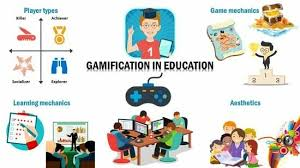
Gamification in learning refers to the practice of incorporating game design elements, like points, badges, leaderboards, challenges, and rewards, into non-game contexts like educational activities to increase engagement, motivation, and overall learning outcomes by making the process more fun and interactive; essentially, it’s applying the principles of game design to enhance the learning experience.
Key points about gamification in learning:
- Goal: To make learning more enjoyable and engaging by tapping into the intrinsic human desire for accomplishment, competition, and progress, similar to playing a game.
- Core elements: Common game elements used in gamification include points systems, levels, badges, challenges, leaderboards, progress bars, avatars, and narrative storylines.
- Benefits:
- Increased student motivation and participation
- Improved knowledge retention and deeper understanding
- Fosters collaboration and teamwork
- Promotes active learning and problem-solving skills
- Distinction from game-based learning: While often confused, gamification is not the same as game-based learning. Game-based learning involves designing a complete game to teach specific concepts, whereas gamification integrates game elements into existing learning activities.
Examples of gamification in learning:
- Point systems: Awarding points for completing tasks or answering questions correctly
- Badges and achievements: Earning digital badges for reaching milestones or mastering specific skills
- Leaderboards: Displaying learners’ progress in a ranked format to encourage competition
- Levels and progression: Moving through different levels of difficulty as skills improve
- Challenges and quests: Setting time-bound or specific challenges to encourage engagement.
KEY TECHNOLOGY:
Technology gamification in learning is the use of game mechanics in learning environments to increase engagement and motivation. It can be used in a variety of learning settings, including online courses, language learning platforms, and other educational technology.
How it works
- Gamification uses game elements like points, badges, leaderboards, and challenges
- It encourages students to take an active role in their learning
- It allows students to test their knowledge and get instant feedback
- It helps students see the real-world applications of the subject matter
Examples
- MinecraftStudents can create virtual worlds and play as a character within the world
- KahootTeachers can create multiple-choice assessments that students can take on their phones, tablets, or computers
- DuolingoA free online language app that uses a badge reward system to keep users engaged
- StoryboardingTeachers create a story arc and incorporate learners directly into the plot
Benefits
- Gamification can improve cognitive, motivational, and behavioral learning outcomes
- It can help students see how their choices result in consequences or rewards
- It can make learning more enjoyable and interactive.
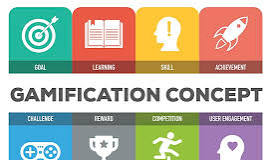
ADVANTAGES AND DISADVANTAGES OF GAMIFICATION IN LEARNING:
Gamification can improve learning and engagement, but it can also have drawbacks.
Advantages
- Motivation: Gamification can make learning more fun and engaging, which can increase motivation and participation.
- Retention: Gamification can help learners retain material better.
- Collaboration: Gamification can help learners collaborate with peers.
- Real-world applications: Gamification can help learners see how the subject matter applies in the real world.
Disadvantages
- Competitive stress: Gamification can lead to a focus on competition and points rather than learning.
- Oversimplification: Gamification can oversimplify complex topics.
- Distraction: Gamification can be distracting and turn learning into a competition.
- Cheating: Gamification can encourage cheating or “gaming the system”.
- Implementation challenges: Gamification can be challenging to implement, and it can be expensive to implement and maintain.
- Accessibility: Gamification can have accessibility and equality concerns.
- Misguided motivations: Gamification can lead to misguided motivations and dropout rates.
Gamification may be more effective for direct learning concepts, while open-ended experiences may be better for more complicated subjects.
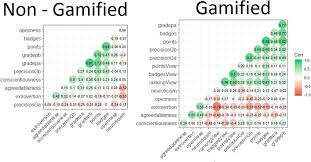
USES OG GAMIFICATION IN LEARNING:
Gamification in learning involves integrating game-like elements such as points, badges, leaderboards, levels, and challenges into educational activities to make the learning process more engaging, interactive, and motivating for students, encouraging them to actively participate and retain information better.
Key ways to use gamification in learning:
- Points and Progress Bars: Tracking progress through points or a progress bar provides visual feedback on achievement and motivates learners to keep going.
- Badges and Achievements: Awarding digital badges for completing tasks or reaching milestones provides recognition and a sense of accomplishment.
- Leaderboards: Creating a competitive environment by displaying learner rankings on a leaderboard can encourage healthy competition and engagement.
- Levels and Tiers: Progressing through different levels or tiers in a learning program adds a sense of progression and accomplishment.
- Challenges and Quests: Presenting learning objectives as challenges or quests can add excitement and a sense of adventure to the learning process.
- Role-Playing Simulations: Allowing learners to take on different roles in simulated scenarios can enhance engagement and understanding of complex concepts.
- Interactive Quizzes and Trivia: Incorporating quizzes with game-like elements like time limits or point systems can make knowledge checks more fun.
- Storytelling and Narrative: Embedding learning content within a compelling story can capture learners’ attention and motivate them to progress through the material.
Benefits of using gamification in learning:
- Increased Engagement: Gamification makes learning more enjoyable and interactive, leading to higher participation and motivation.
- Improved Knowledge Retention: By actively engaging with the material, learners are more likely to retain information effectively.
- Enhanced Skill Development: Gamified activities can provide opportunities to practice and refine skills in a low-pressure environment.
- Positive Feedback and Motivation: Immediate feedback through points, badges, and progress bars can encourage learners to continue learning.
Examples of gamification in learning:
- Language learning apps: Using points, badges, and leaderboards to motivate users to practice vocabulary and grammar.
- Online training courses: Incorporating quizzes with time limits or points to test knowledge and keep learners engaged.
- Classroom activities: Implementing team-based challenges or role-playing scenarios to promote collaboration and active learning.
- Personalized learning platforms: Adapting learning pathways based on individual progress and providing targeted challenges.
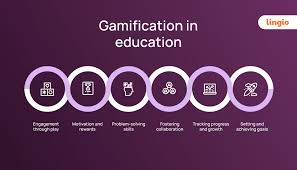
HOW IT WORKS:
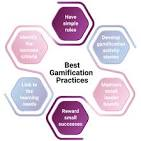
Gamification in learning works by integrating game-like elements, such as points, badges, leaderboards, challenges, and levels, into educational activities to increase learner engagement and motivation, making the learning process more interactive and fun by tapping into the natural desire to progress and achieve goals within a game-like environment.
Key aspects of gamification in learning:
- Game mechanics:These are the core elements of a game, like points for completing tasks, badges for achieving milestones, and leaderboards to compare progress with peers.
- Progress and feedback:Learners receive immediate feedback on their performance, often through points or visual cues, which helps them track their progress and stay motivated.
- Challenges and rewards:Presenting learning content as challenges with attainable rewards (like unlocking new features or virtual prizes) encourages active participation.
- Storytelling and narrative:Incorporating a story or narrative can add context and depth to the learning experience, making it more engaging.
- Competition and collaboration:Options to compete with peers on leaderboards or collaborate in teams can enhance engagement, especially for learners who thrive on social interaction.
How gamification can be applied in learning:
- Quizzes and trivia: Turning quizzes into interactive game formats with point systems and time limits.
- Learning modules with levels: Breaking down learning content into progressively more challenging levels, allowing learners to “level up” as they master concepts.
- Role-playing simulations: Allowing learners to take on different roles in a simulated scenario to practice decision-making and problem-solving.
- Personalized learning paths: Tailoring learning content and challenges based on individual learner progress and needs.
Benefits of gamification in learning:
- Increased engagement and motivation: The game-like elements make learning more enjoyable and encourage learners to actively participate.
- Improved knowledge retention: By making learning interactive, gamification can lead to better information retention.
- Enhanced collaboration and teamwork: Activities that involve collaboration can foster teamwork and communication skills.
- Positive learning experience: The fun and rewarding aspects of gamification can create a more positive learning experience.
